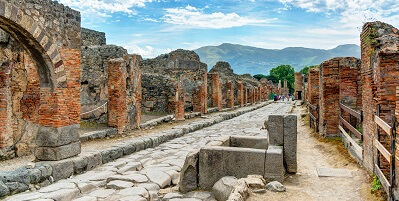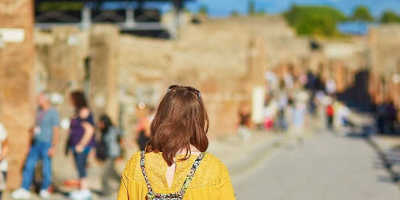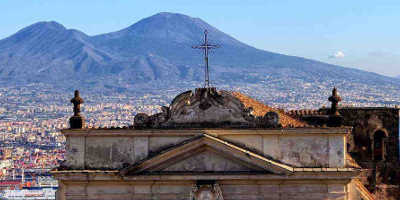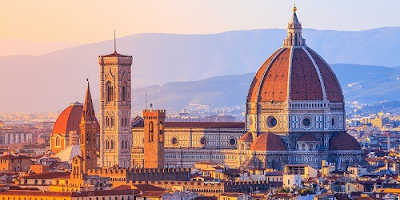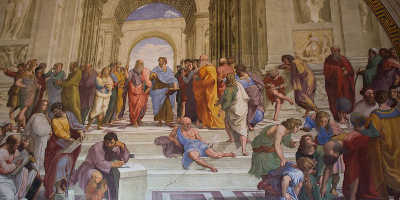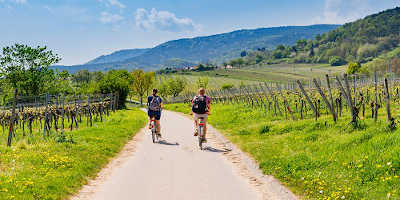Who were the slaves of Pompeii?
The archaeological site of Pompeii preserves abundant evidence of slavery. With bodies, artwork and even shackles remaining as proof of this tragic aspect of society
Pompeii was once a prosperous city before its tragic demise. A popular holiday spot for wealthy Romans and an important transit point for merchandise arriving from the coast. Glamorous fashion and adornments were used commonly, with marketplaces, bathhouses, and brothels lining the cobblestone streets. Sadly, ancient Rome owes much of its grandeur and advancement to the physical hard labour of slaves. Their importance to the empire’s growth made them a highly important aspect of Roman life. Yet, despite the city’s overall beauty, the reality of the unprivileged members of society was quite ugly. Within ancient times, 30 per cent of the population of Italy were slaves, with Pompeii having a higher average due to its trading.
Slavery in Roman Society
As briefly outlined above, slavery was not confined to the city of Pompeii, much of Ancient Rome’s quality of life depended on slave labour. A common practice in all Mediterranean lands to use slaves to work the lands, wait on you or serve any one of your needs. The development of slavery happened over a number of decades and centuries, changing with the expanse of the R0man Empire. To begin with, it was mainly the richest of society or those in high power that had slaves, but eventually, this infused its way into common society, with middle-class households having their own slaves as well. A farmer, for instance, would get his family to help with the harvest, as well as two or three slaves to keep the cost down and make more profit. The slaves themselves also changed over time. At first, they were Italian’s like their owners, often being brought into the life of their family, sharing their customs and traditions. It was in the 2nd and 3rd centuries that slaves started to pour in from Rome’s expeditions across Europe and Asia.
Who were these Slaves?
There was a range of different ways to become a slave. Offspring of slave mothers were automatically condemned, with some being born in the city specifically for the purpose of being a slave. Abandoned children, which was high, were picked up off the streets. War-captives were very common, as well as criminals from various wrongdoings. Ethnic origin also played a part as slave dealers were required to provide proof of the ethnicity of their stock. Certain nationalities, such as Greek, were preferred as slaves and were commonly used to tutor a family’s children. This brought a great status symbol to any particular household who owned a Greek slave. Ancient Rome also got its slaves from prisoners of war, which was common considering they were a powerful military force who won many battles and wars during their expansion. Sailors also captured and sold pirates if they met them out at sea. Or slaves were bought abroad and then brought back to the city to trade. The most shocking slaves were ones sold into slavery by their families during hard financial times, to make up the money.
The Type of Slaves
Due to lost records, there is quite a lot of mystery involved with Pompeii’s salves. Historians have drawn on literature, law, and art to bring the Pompeii’s slaves out of the shadows. They ranged from sex workers, household servants, concubines and farmers. Overall, studies have shown that slaves worked everywhere – in private households, mines, factories and farms. They also worked for city governments on engineering projects such as roads, aqueducts and buildings. As a result, they merged easily with the population. Sex workers were very common, with a number of brothels flooding the area. Although most of the remaining Pompeii frescos depicted on brothel walls illustrate the services to be an erotic and exotic treat, the reality was very different. The rooms doubled as cells for the workers, so small they only fit one single stone bed. Households slaves were used for a number of jobs, acting as cleaners, cooks, and sometimes tutors. Slaves who worked in agriculture had a tough time, facing hard labour and receiving next to no basic life comfort. They were given poor living quarters, often chained at night so they wouldn’t run away, and then given minimal food and clothing. Life was easier in towns where slaves worked on construction and repair work, often in the public eye allowing a greater chance of freedom. With the type of work they also got very physically fit which meant they could be sold as a gladiator, and a chance for glory. This goes some way in showing the dire existence of a slave. An injustice system where people received no payment for their hard work, but were instead shunned from society, not being allowed to take part in any main cults of religion or public rituals. Their life was cruel, with their level of cruelty being much dependent on who owned them. Skilled individuals who helped their master’s with business matters became trusted, and therefore treated well with the hope of freedom. Whereas other slaves were beaten and chained in their position. Some did try to speak out against slavery, but it was just too essential to Rome’s progress. One poet and philosopher, Seneca argued that slaves should at least be treated fairly.
Where you can see them
Take a step back in time in the frozen city. Visit the ancient buildings, see the historic artefacts, and even marvel at the body casts of past people. Slave history can be seen throughout the city, so you only have to join a tour and learn all about the city’s heartbreaking past. Cast bodies have been found in cellars and on the streets still shackled to the walls, with no option of fleeing. Instead these slaves were left to face the oncoming destruction with the realisation that there was nothing they could do to save themselves. This tragic and devastating reality has at least contributed to our understanding of slavery in ancient Rome, whose importance might otherwise have been overlooked.


